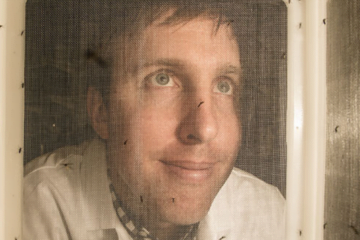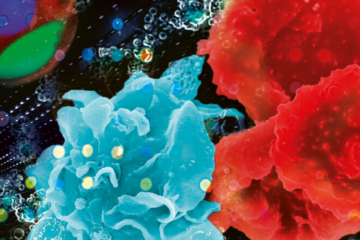Efforts to control the spread of malaria have traditionally focused on transmission, the human-mosquito interaction. Such measures typically involve the use of a mosquito net and the spraying of insecticides. For those protected by them, these measures are effective and advisable. Yet they have one flaw. They don’t stop the transmission of the disease to those not protected by them; the mosquito still carries the Plasmodium malaria parasites in its bloodstream.
What if we could modify the mosquito so that it couldn’t transmit the disease at all, regardless of whether it bit a human? What if we could vaccinate the mosquito? That’s the rationale behind so-called ‘gene drives’; the technology that promotes the inheritance of specific genetic traits by releasing genetically-modified mosquitoes into the wild.
The technology that allows us to edit mosquito DNA is the CRISPR cas9 system. It is the natural defence system of certain bacteria used, in natural circumstances, to defend against viruses. CRISPR cas9 is an enzyme that acts like a pair of molecular scissors, capable of cutting out sections of DNA. Upon reproduction, it copies and pastes itself into each chromosomic variant, ensuring it’s inheritance. Gene drives harness this technology and apply it to the spread of genetic modifications in populations of mosquitoes.
Gene drives have two requirements. First, the target species must reproduce sexually. Gene drives won’t work on bacteria or viruses as they reproduce asexually. The generation cycle of the species must also be short. Providing those two conditions are met, the genetic makeup of the chosen species can be edited using the CRISPR cas9 system.
There are a number of applications to the use of gene drives. They can be used to install resistance, to insecticides or herbicides, for example [1]–[3]. They can also be used to control invading species or to prevent vector-borne diseases – like dengue, zika or malaria – by controlling the population of insect vectors.
In the context of malaria, gene drives could help to dramatically reduce the transmission of the disease by targeting the Anopheles mosquito, the type of mosquito that transmits malaria. There are two ways to achieve this. Either by ‘vaccinating’ the mosquito to increase resistance to the malaria parasite or by inhibiting its reproductive ability.
In 2015, researchers from the University of California used gene-editing technology to vaccinate a population of Anopheles stephensi mosquitoes, the main malaria vector in India. They inserted a gene of resistance to Plasmodium falciparum, the most prevalent malaria parasite [3].
More recently, researchers at Imperial College London aimed to inhibit the reproductive abilities of the mosquito. They targeted a gene called doublesex, which determines the development of the gender traits (male or female) in Anopheles gambiae, the main vector of malaria in Africa. Their genetic modification made female mosquitoes sterile, but didn’t affect the males, who could continue to transmit the genetic modification over generations [4].
In 2018, 10,000 sterilised mosquitoes were released in Burkina Faso, in a project coordinated by Target Malaria, a consortium of scientists and researchers. It was the first time that genetically-modified mosquitoes were released into the wild.
While on the surface gene drives appear harmless and long overdue, they raise serious ethical and biological questions. New rules ought to be created to regulate their use, especially in a military or terrorist context.
It’s also important to consider the biological and ecological questions of using gene drives. A population of mosquitoes may develop natural resistance against a genetic modification [5], which could prevent further inheritance of it. Gene drives may not always be needed, either. Other strategies – like the use of insecticides or mosquito nets – could be more appropriate.
‘Gene Drives: Can We Vaccinate Mosquitoes?’ was written by Justine Rougé, a PhD student at the University of Glasgow. It was edited and read by Thomas Locke.
[1] J. E. DiCarlo, A. Chavez, S. L. Dietz, K. M. Esvelt, and G. M. Church, “Safeguarding CRISPR-Cas9 gene drives in yeast,” Nat. Biotechnol., vol. 33, no. 12, pp. 1250–1255, Dec. 2015.
[2] V. M. Gantz et al., “Highly efficient Cas9-mediated gene drive for population modification of the malaria vector mosquito Anopheles stephensi,” Proc. Natl. Acad. Sci. U. S. A., vol. 112, no. 49, pp. E6736–E6743, Dec. 2015.
[3] V. M. Gantz and E. Bier, “The mutagenic chain reaction: A method for converting heterozygous to homozygous mutations,” Science (80-. )., vol. 348, no. 6233, pp. 442–444, Apr. 2015.
[4] K. Kyrou et al., “A CRISPR-Cas9 gene drive targeting doublesex causes complete population suppression in caged Anopheles gambiae mosquitoes,” Nat. Biotechnol., vol. 36, no. 11, pp. 1062–1066, Dec. 2018.
[5] E. Callaway, “Gene drives meet the resistance,” Nature, vol. 542, p. 15, 2017.


